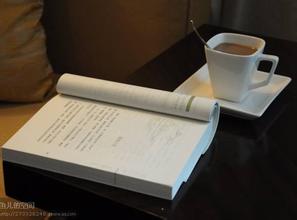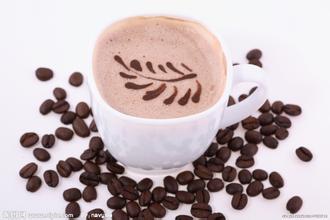Introduction to flavor description and taste characteristics of Colombian coffee bean graded Rosa coffee
The world coffee is divided into two series, one is the "hard" coffee represented by Brazil, which has a strong flavor, and the other is the "soft" coffee represented by Colombia, which has a light flavor. The difference lies in the altitude of the producing area and the method of planting. Coffee is planted extensively in hilly red soil in Brazil and intensive cultivation in mountain black soil in Colombia.
Colombian coffee is divided into more than 200 grades, which means that the coffee is very regional. The country's coffee-producing areas are located in the Andes, where the climate is mild and the air is humid. Colombia has three Codiera mountains running north and south, right into the Andes. Coffee is grown along the highlands of these mountains. The mountain steps provide a diverse climate, where the whole year is the harvest season, and different kinds of coffee ripen at different times. And fortunately, unlike Brazil, Colombia doesn't have to worry about frost. There are about 700 million coffee trees in Colombia, 66% of which are planted in modern plantations, and the rest are planted in traditional small farms with the pure taste of Colombian coffee, in addition to the natural environment with the most favorable conditions for coffee growth, it is inseparable from the hard work of local growers. In Colombia, coffee cultivation has reached 1.07 million hectares, there are about 302000 coffee plantations in the country, and 30 to 40 per cent of the rural population depends directly on coffee production. Although there are many farms in Colombia, they are not large in area. The area of each farm is only about 2 hectares, and more than 80% of the coffee plantations have only about 5000 coffee trees, an average of 3000. Thus it can be seen that agriculture in Colombia belongs to the small-scale farm type. The locals plant tall trees or banana trees around the coffee trees. Build an Arbor for coffee trees at the seedling stage to ensure the cool and humid environment needed for coffee growth. Due to the high humidity, small temperature difference and slow ripening of coffee beans in the coffee forest, which is conducive to the accumulation of caffeine and aromatic substances, the best quality of coffee has to mention "Arabica species" (scientific name Coffee Arabica) in Colombian coffee species. Arabica coffee trees grow between 900m and 2000 m above sea level; they are cold-resistant, and the suitable growth temperature is 15ml / 24m; they need more humidity, and the annual rainfall is not less than 1500 ml. At the same time, they also require higher cultivation techniques and conditions. So you can now understand why Arabica coffee has a varied and broad potential flavor in the background of the Dess Mountains in the coffee growing area when the logo is explained above. Arabica coffee produced in different regions, different elevations and different climatic areas usually has its own characteristics. It smells like grass when it is not roasted, and after proper roasting, it shows fruity (light baked) and caramel sweet (deep roasted). Her excellent flavor and aroma make her the only coffee among these native species that can be drunk directly and alone. As a result, she won more praise than any other coffee: known as "green gold".
Export and Management of Colombian Coffee
Compared with other producing countries, Colombia is more concerned with developing products and promoting production. It is this, coupled with its superior geographical and climatic conditions, that makes Colombian coffee excellent in quality and delicious and famous all over the world. The status of coffee in Colombia is evident in the following example: all vehicles entering the country must be sprayed and sterilized so as not to inadvertently cause disease and damage coffee trees.
In addition, the export management of the coffee trade in Colombia is mainly the responsibility of the National Federation of Coffee owners. It is an unofficial industry organization with several government ministers as its members. Colombian law clearly stipulates that only private businessmen with federation licenses can export coffee in order to maintain the image of Colombian coffee in the world and to ensure stable government revenue in the coffee trade.

Important Notice :
前街咖啡 FrontStreet Coffee has moved to new addredd:
FrontStreet Coffee Address: 315,Donghua East Road,GuangZhou
Tel:020 38364473
- Prev

Java Coffee Bean Flavor Description Grind Scale Processing Manor Area Introduction
Java coffee aroma is rich and thick, with a clear quality of acidity, high balance, sometimes with nutty taste, lingering. Java Coffee Premium is excellent in appearance and quality, just like a woman's subtle charm, charming and just right, which makes people miss it. Each type of caffeine comes from a different place and has its own strong personality, such as masculine
- Next

Introduction of fragrant Hawaiian Coffee Bean Grinding scale treatment method Manor production area
It belongs to the coffee cultivated by the volcano in western Hawaii. it is also the only coffee variety produced in the United States. it has a strong taste, strong flavor, strong acid and special flavor. The quality is quite stable and it is one of the local products that must be purchased by tourists going to Hawaii. The quality of real Kona coffee is indeed a treasure in the world and is not easy to find. The best Kona coffee is divided into three grades: ExtraFancy and Fanc.
Related
- Detailed explanation of Jadeite planting Land in Panamanian Jadeite Manor introduction to the grading system of Jadeite competitive bidding, Red bid, Green bid and Rose Summer
- Story of Coffee planting in Brenka region of Costa Rica Stonehenge Manor anaerobic heavy honey treatment of flavor mouth
- What's on the barrel of Blue Mountain Coffee beans?
- Can American coffee also pull flowers? How to use hot American style to pull out a good-looking pattern?
- Can you make a cold extract with coffee beans? What is the right proportion for cold-extracted coffee formula?
- Indonesian PWN Gold Mandrine Coffee Origin Features Flavor How to Chong? Mandolin coffee is American.
- A brief introduction to the flavor characteristics of Brazilian yellow bourbon coffee beans
- What is the effect of different water quality on the flavor of cold-extracted coffee? What kind of water is best for brewing coffee?
- Why do you think of Rose Summer whenever you mention Panamanian coffee?
- Introduction to the characteristics of authentic blue mountain coffee bean producing areas? What is the CIB Coffee Authority in Jamaica?

